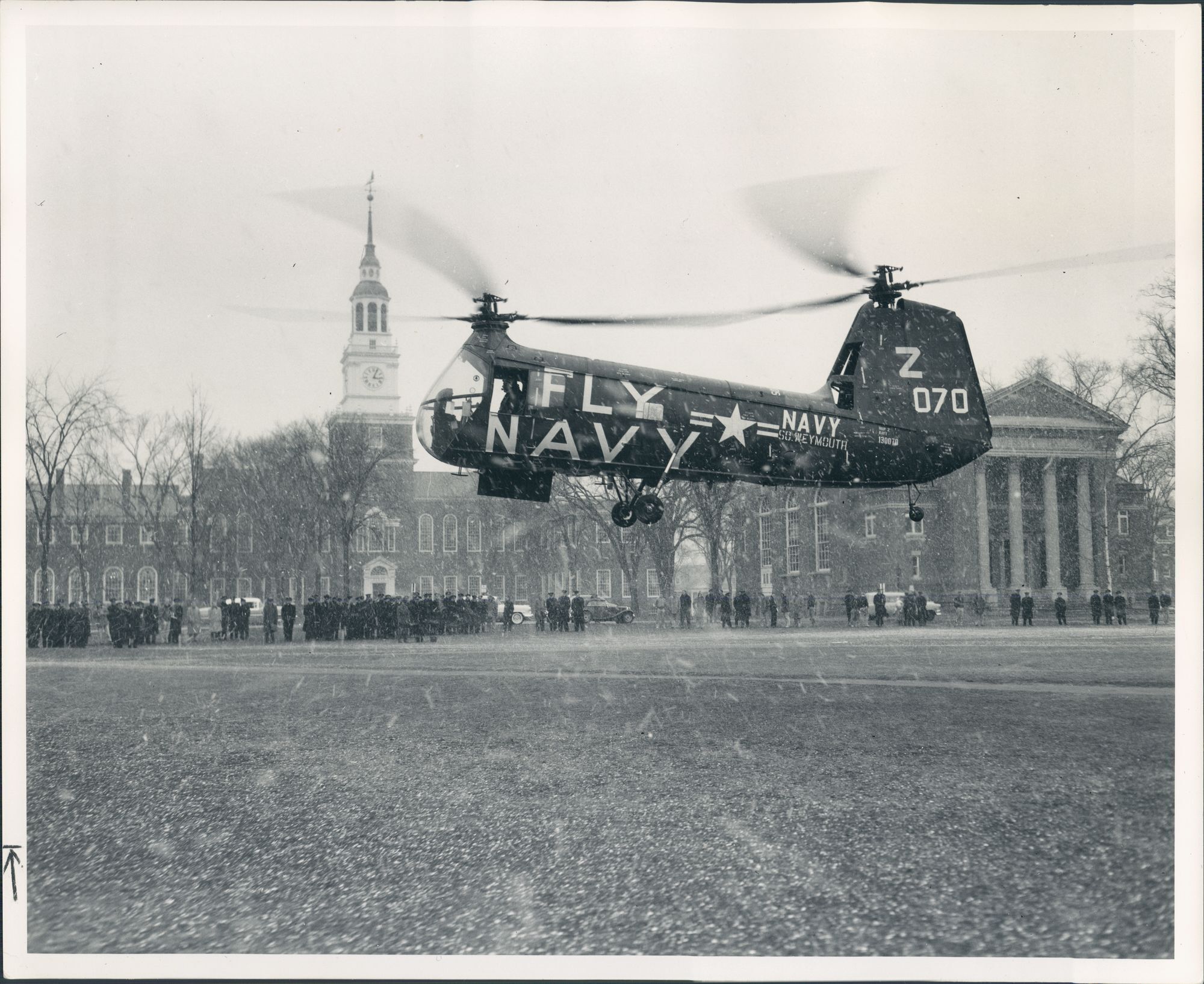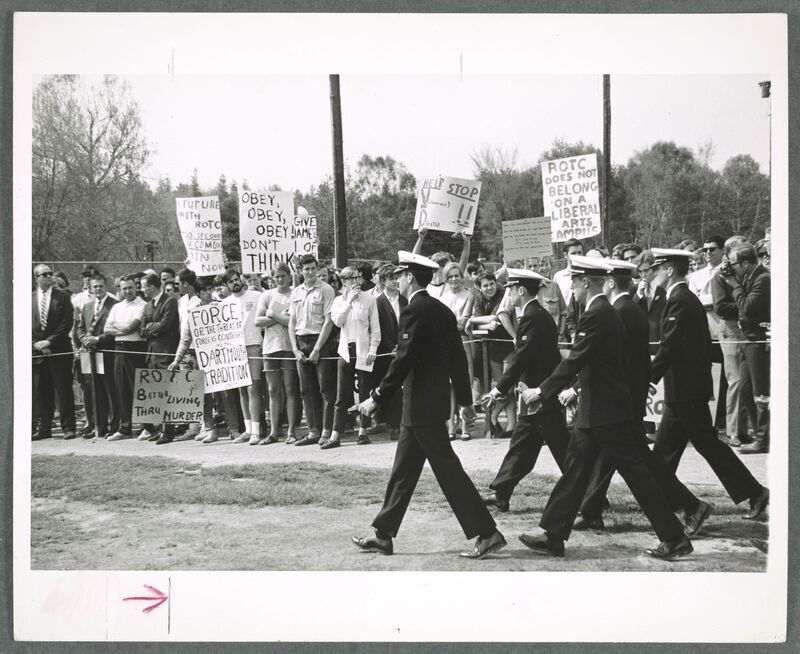The Military Service Experience of College Students
Student Service during the Cold War
In the early 1950s, as the Soviet threat grew imminent, the Truman administration resolved to rapidly strengthen military capabilities in response; defense spending nearly tripled as a percentage of GDP in just over three years (U.S. Department of State). More weapons called for more men to wield them, and the military identified college-aged men as the target. Claire Betzer '23, Connor Norris '25, and Kate Packard '22 cite Army ROTC pamphlets in their exhibit, authored by U.S. Army Secretary Wilber Brucker. Brucker emphasized "recruiting bright, college-educated individuals, highlighting the inadequacy of the U.S. Military Academy in meeting the demand for officers and underscoring the necessity for knowledgeable and discerning leaders given the global circumstances" (Betzer et. al 2023). In his words, "the Army needs, as never before, young men with diverse educational backgrounds not only in the sciences, but in the arts and letters, men of vision, imagination, and courage, men capable of developing into MacArthurs and Eisenhowers."
It is worth noting the G.I. Bill as the military expanded its personnel during the Cold War. On January 10, 1944, Congress approved the Servicemen’s Readjustment Act of 1944, commonly known as the G.I. Bill of Rights. Signed into law by President FDR on June 22, a little over two weeks after the Allied invasion of Normandy, the bill aimed to assist veterans in transitioning to civilian life. The G.I. Bill provided federal aid to support veterans in purchasing homes, securing employment, and pursuing education, serving as a comprehensive initiative to facilitate their reintegration into civilian society.
[The G.I. Bill] paid for my time at Dartmouth and Columbia... The final part of the Dartmouth Medical School and Columbia"
- Dr. John Buckner '62
Recruitment on Campus
As J.P. Mortenson '21 writes in his own exhibit on the Military, Vietnam, and Dartmouth in the 1960s, the Vietnam War incited a new layer of campus activism, militaristic by definition.
In the early 1900s, recognizing the demand for a greater number of trained officers than military academies could supply, leaders in the United States Military pushed for the 1916 ROTC bill. This legislation aimed to address the shortage by establishing training programs at various colleges nationwide, with the objective of cultivating officers for the active Army, Army Reserve, and National Guard.
Preceding the introduction of ROTC at Dartmouth, the campus hosted 2,000 participants in the V-12 program–an initiative that aimed to bolster commissioned officers during World War II through a blend of education and military service. At one point, the V-12 program constituted the majority of Dartmouth's student body.
Dartmouth introduced Navy ROTC to its campus in 1946, and shortly thereafter, in 1951, the College established Army and Air Force ROTC programs. ROTC was extremely popular amongst the student body from its inception: "almost a third of each class, roughly 200 students, graduated from ROTC every year. By the end of the Vietnam War in 1972, more than 1,800 students had trained by the program" (Mortenson 2020).
I joined the Army on my own. I chose that because I think the Navy and Air Force were probably four years minimum, and the Army was three. If you got drafted, it was two, and that's why I chose the Army.
- Dr. John Buckner '62
“You must understand this. We were a generation that was traumatized by assassinations, the horrible brutality of the Vietnam War and the violence associated with the civil rights movement. Our fellow students were being trained to be cannon fodder in essentially a racist and genocidal war. We were threatened with death: it lights a fire under you.”
David H. Green '71, a participant of the Parkhurst Occupation



